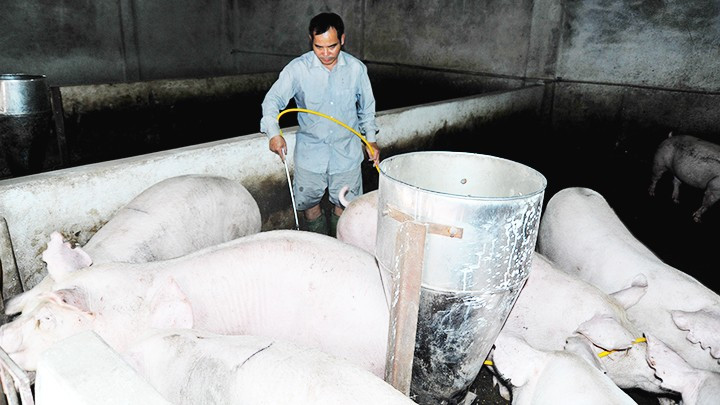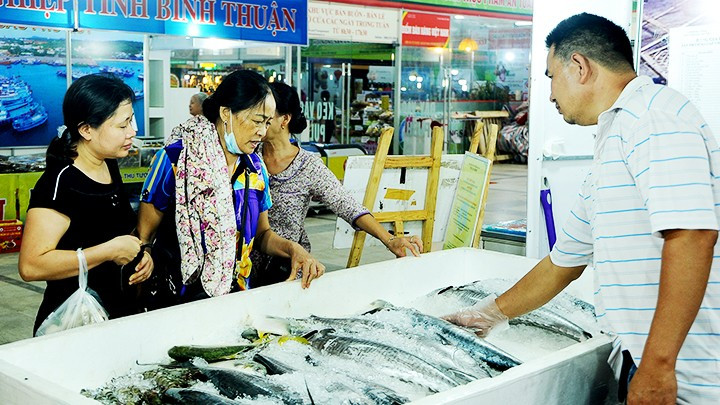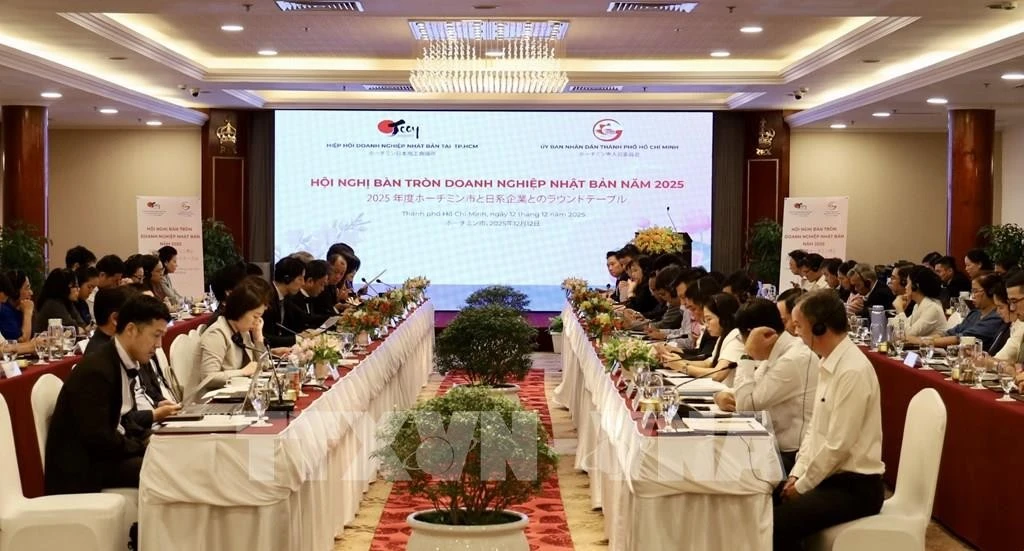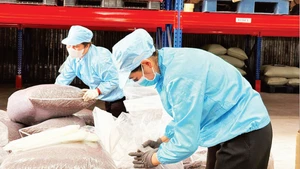Vietnamese agricultural products are now present in 200 countries and territories and can meet the requirements of even the most demanding markets.
"The success of the agricultural sector is supported by tens of millions of farmers and businesses. The key experience is the dynamism of localities in transitioning from agricultural production to agricultural economy thinking, which helps farmers understand that production must follow the market." This is one of the most important factors pointed out by Minister of Agriculture and Rural Development (MARD) Le Minh Hoan as the agricultural sector continues to be a bright spot in the 2024 economic picture.
Accordingly, despite facing many challenges due to market fluctuations, particularly the heavy impacts of storm No.3, in 2024, the agricultural sector still maintains stability.
Success in various fields
According to the General Statistics Office, Storm No.3 caused significant damage to agricultural, forestry, and aquaculture production in northern provinces. The production value of annual crops in the affected provinces in the third quarter decreased by 7.2% compared to the same period last year, while perennial crops decreased by 13%. The impact of the storm continued into the fourth quarter, with the autumn rice output of northern provinces dropping by 584,800 tonnes compared to the previous season; the production value of annual crops in the affected provinces continued to decrease by 5.6%, while perennial crops fell by 5.1%. Despite this, the growth rate of the agricultural, forestry, and aquaculture sectors in 2024 still reached 3.27%.
Dau Ngoc Hung, Director of the Department of Agricultural, Forestry, and Aquaculture Statistics at the General Statistics Office, evaluated that there were many factors contributing to the positive growth results of the agriculture sector for the year.
The first factor is the timely attention, direction, and support from agencies and sectors at all levels, along with the proactive response of localities in dealing with and recovering from the storm's aftermath, which helped minimise the damage and allowed for the swift restoration of production.
Additionally, the positive contributions from livestock, forestry, and aquaculture activities, as well as production in areas not affected by the storm, helped compensate for the losses caused by the storm. The production of live pork in 2024 was estimated to increase by 6.6% compared to the previous year (with an 8.6% increase in the fourth quarter). Some provinces in the Central Highlands and Southeast regions saw a significant increase in pork production, with numerous large-scale livestock projects. The total poultry meat production for the year increased by 5.4% (with a 6.4% increase in the fourth quarter).
In the forestry sector, the volume of wood harvested rose significantly, with the total wood production for the year estimated to increase by 7.9% (with a 9.6% increase in the fourth quarter). The export turnover of wood and wooden products in 2024 reached 16.3 billion USD, an increase of 20.9% compared to 2023.
Aquaculture activities continue to develop well, especially in the key area of the Mekong Delta (accounting for more than 70% of the country's production), with high-value products such as farmed shrimp and tra fish recordingsignificant increases. The production of farmed shrimp in 2024 is expected to rise by 5.6% (with a 7% increase in the fourth quarter); tra fish production is up by 4.8% (with a 5.3% increase in the fourth quarter). Seafood exports for the year reached over 10 billion USD, an increase of 11.9% compared to 2023.
In addition, despite a significant decrease in rice production during the summer-autumn harvest due to the storm, the total rice production for 2024 is still expected to be similar to 2023, thanks to an increase of 145,000 tonnes in the winter-spring crop, 139,100 tonnes in the summer-autumn crop, and 118,5000 tonnes in the autumn-winter crop of the Mekong Delta. Rice prices increased sharply (on average, a 15.6% rise for the year), with 2024 rice exports increasing 11.2% in volume and 21.2% in value compared to 2023.
 |
| The production of live pork for 2024 was expected to increase by 6.6% compared to the previous year. (Photo: NGUYEN NAM) |
Striving to maintain growth momentum
Sharing the direction to maintain industry growth momentum in 2025, Minister Le Minh Hoan stated that the principle of diversifying products and markets will always be focused.
Accordingly, the Ministry of Agriculture and Rural Development will continue to promote trade, open up markets, negotiate to remove technical barriers, and trade barriers, and further open up official export markets for agricultural products to traditional markets and large export markets such as China, the US, the European Union, Russia, Brazil, Japan, the Republic of Korea, and others. Particularly, efforts will be made to open new markets with significant potential, such as the Halal food market of Muslim countries, the Middle East, and Africa.
The Ministry will also coordinate with other ministries, especially the Ministry of Industry and Trade, to proactively and effectively implement free trade agreements and regional and bilateral agreements with countries. The Ministry, along with embassies, trade counsellors, and agricultural attachés, will gather and provide information on market preferences and needs, effectively transmitting it to businesses, farmers, and localities. At the same time, the Ministry will support and connect businesses to participate in trade promotion activities, product marketing, and official export with diplomatic activities to large markets, and effectively explore potential markets.
He also mentioned that Vietnamese agriculture still has a lot of potential for development. In particular, the development of circular agriculture is a very important direction. Currently, most of Vietnam's agricultural products are only exploited in raw form.
Vietnam's agriculture is moving toward a circular agriculture model, but this process is still in its early stages. Vietnam continues to sell rice in its raw form, while alongside rice, there are by-products like rice husks, bran, and straw. All these by-products can be transformed into products such as growth media for plants and pellets or combined with biological products to create organic fertilisers and regenerate soil.
"If we only look at the sector in a narrow, single-minded way, it is difficult to increase the value of agricultural products. In my opinion, we need to create more products from a single product, rather than discarding them and spending extra effort to handle them to protect the environment. Circular agriculture will not throw anything away. The goal is to move towards agriculture with no waste", Minister Le Minh Hoan shared.
In 2025, the entire agriculture and rural development sector aims for a GDP growth rate of 3.3-3.4%; the total export value of agricultural, forestry, and fishery products to reach 64-65 billion USD; and over 80% of communes to meet the criteria for the new rural development standard.
At the conference to review the operation in 2024 and revise tasks for the Ministry of Agriculture and Rural Development, Prime Minister Pham Minh Chinhacknowledged, praised, and highly appreciated the efforts and achievements that the agricultural sector has made, contributing significantly to the overall achievements and results of the entire country. The Prime Minister directed the Ministry of Agriculture to further improve its work on planning, strategy development, institutional and policy mechanisms, addressing bottlenecks for rapid and sustainable development; promoting the application of science and technology, innovation, and digital transformation to develop a green economy, digital economy, circular economy, and knowledge economy; contributing effectively to combating climate change, especially in key regions, with the goal that farmers should become wealthier and happier, rural areas more modern, and agriculture more advanced.
2024 also marked a year of impressive export turnover for Vietnam's agricultural products. Many items and product groups saw significant export increases compared to 2023: Wood and wood products reached 16.3 billion USD (up 20.9%); seafood 10.04 billion USD (up 11.9%); fruits and vegetables 7.15 billion USD (up 27.6%); rice 5.67 billion USD (up 21.2%); coffee 5.62 billion USD (up 32.5%); cashew nuts 4.34 billion USD (up 19.2%); rubber 3.42 billion USD (up 18.2%).
















